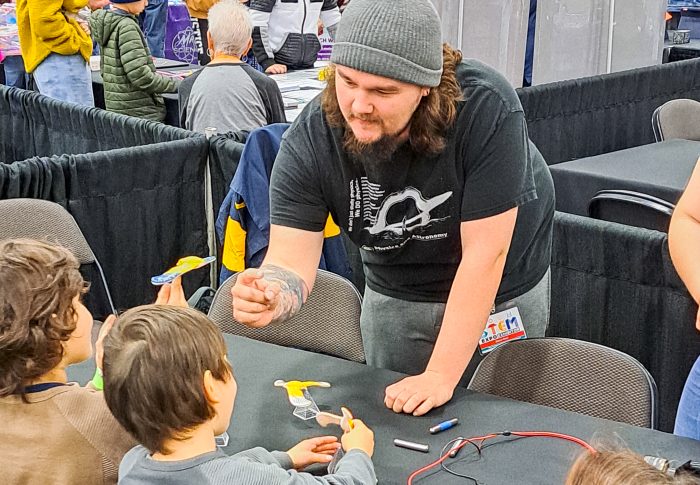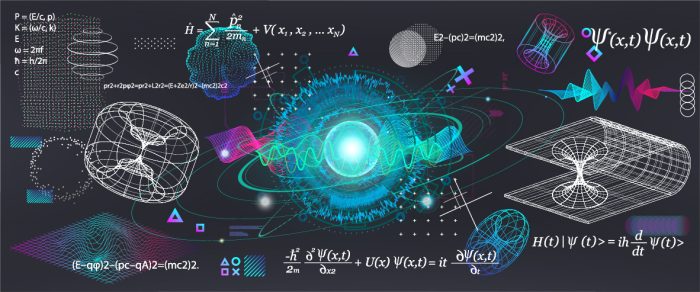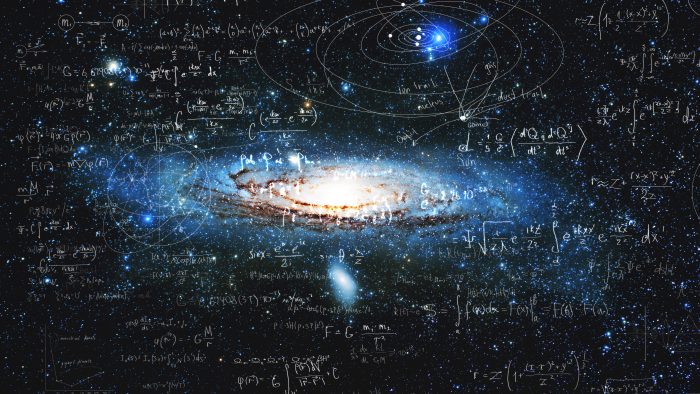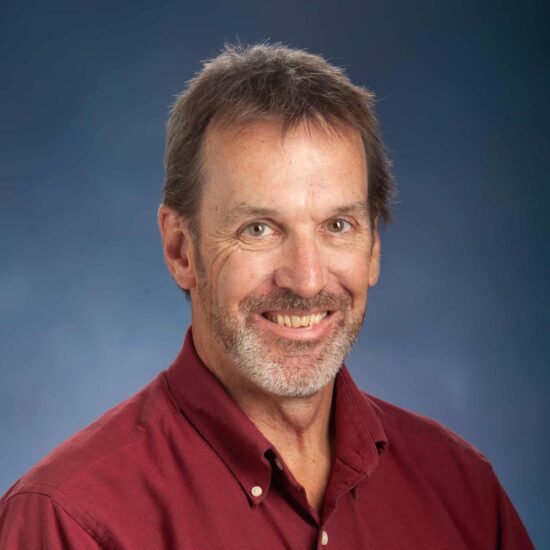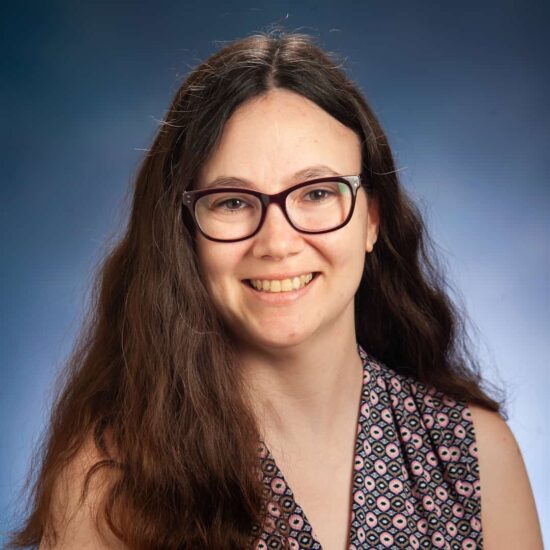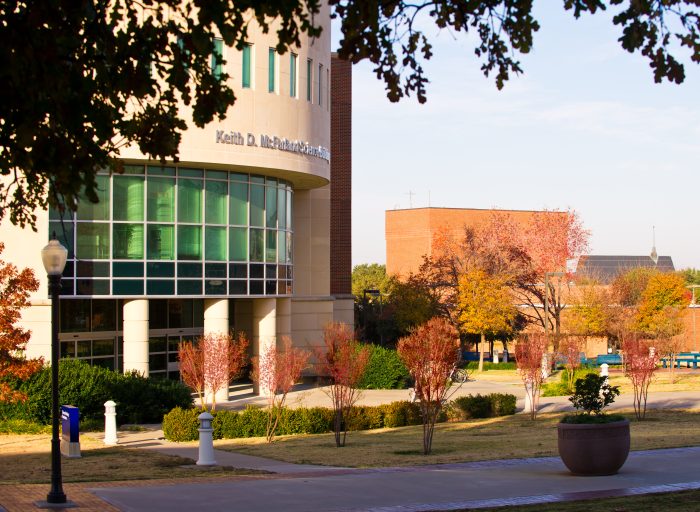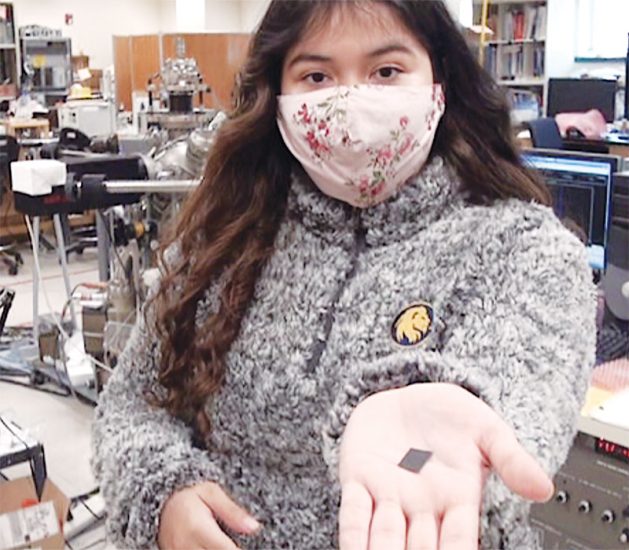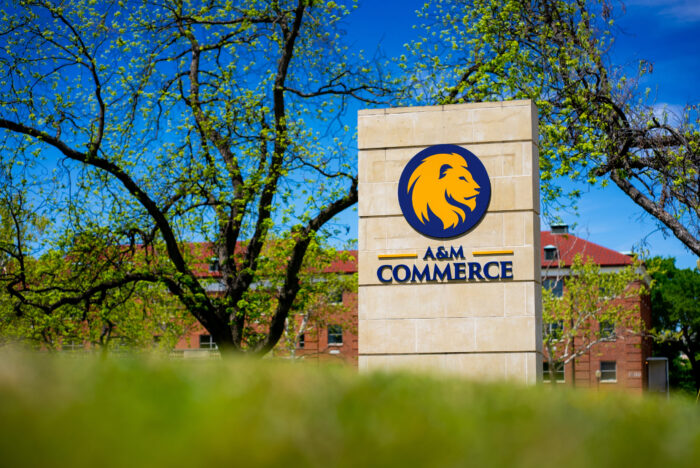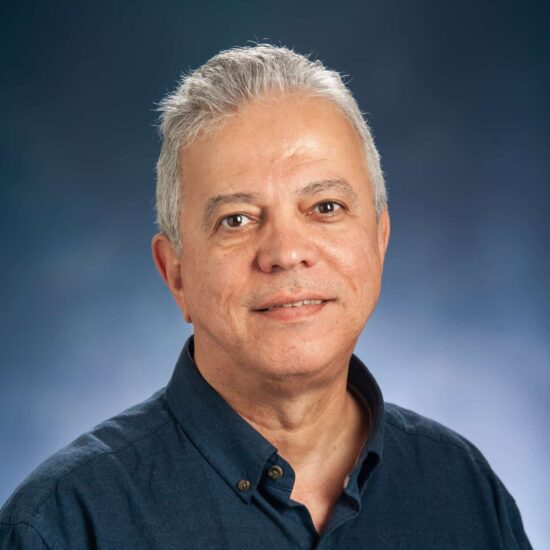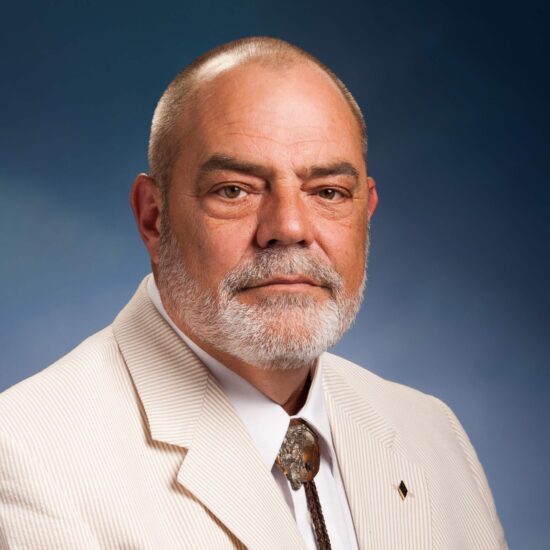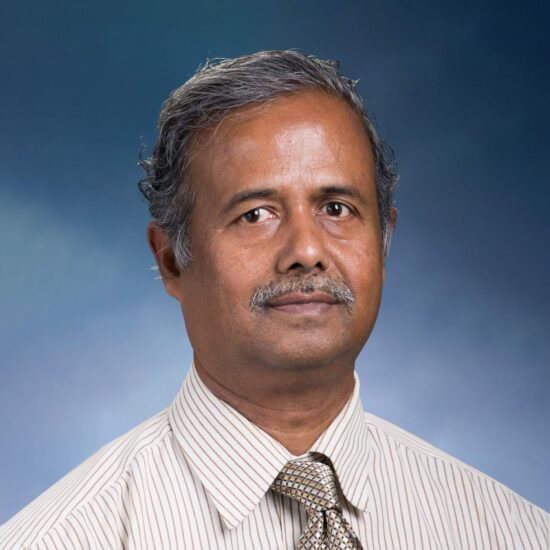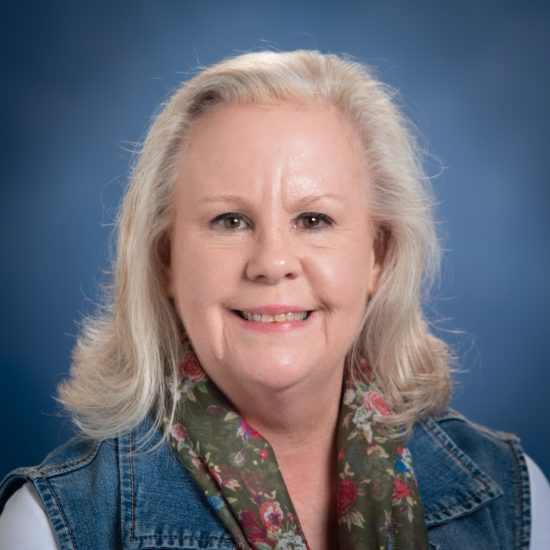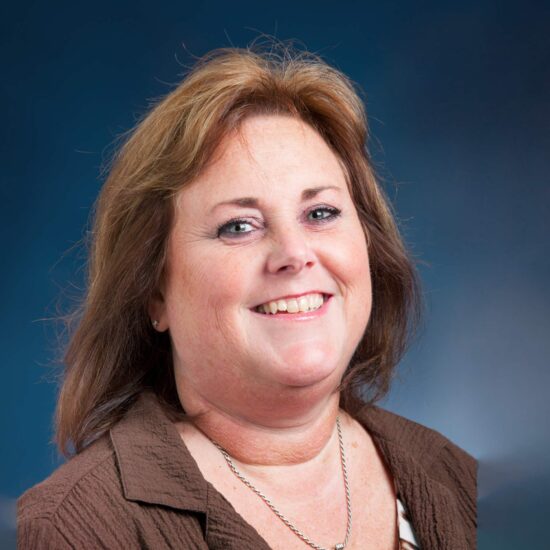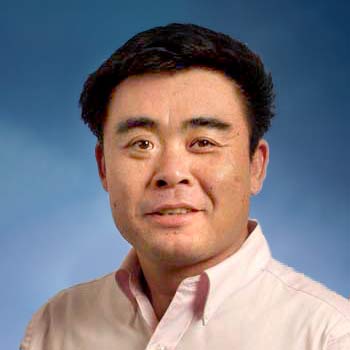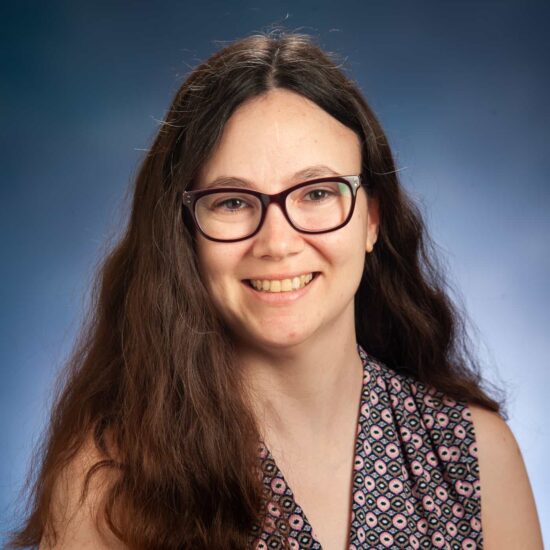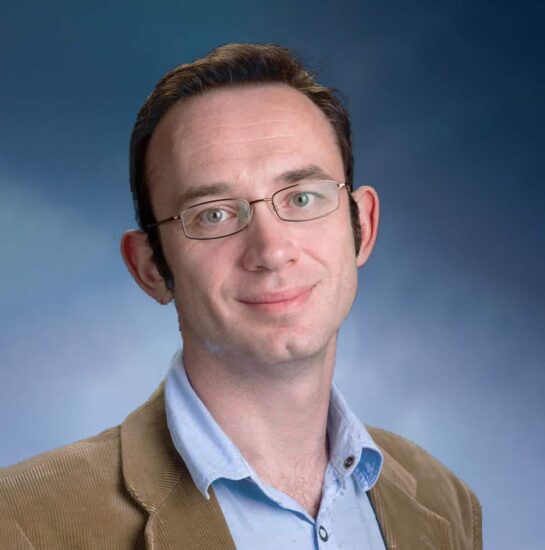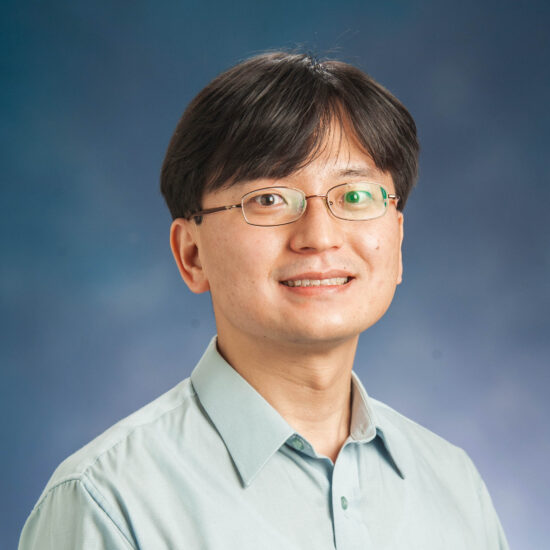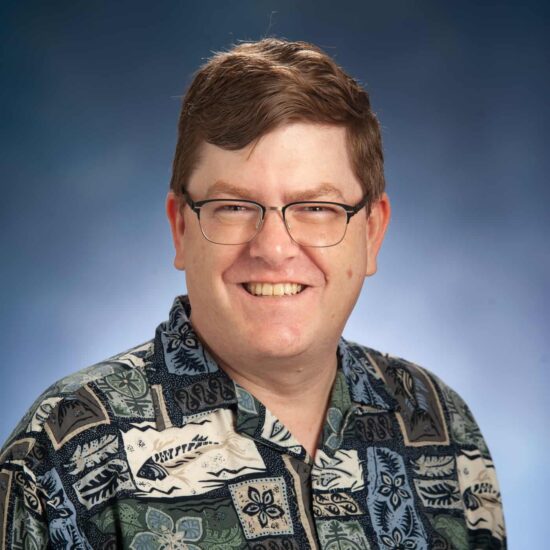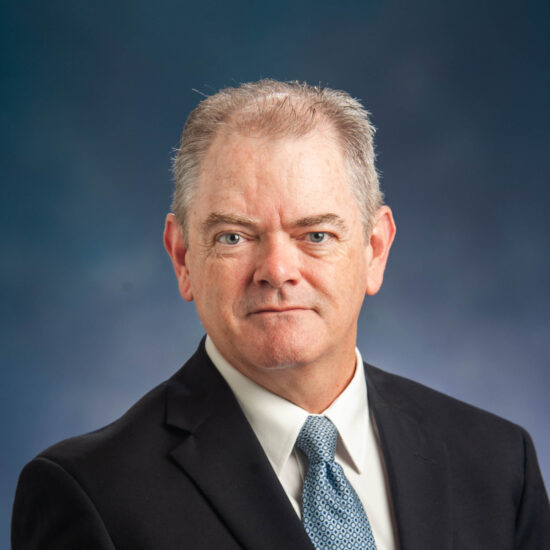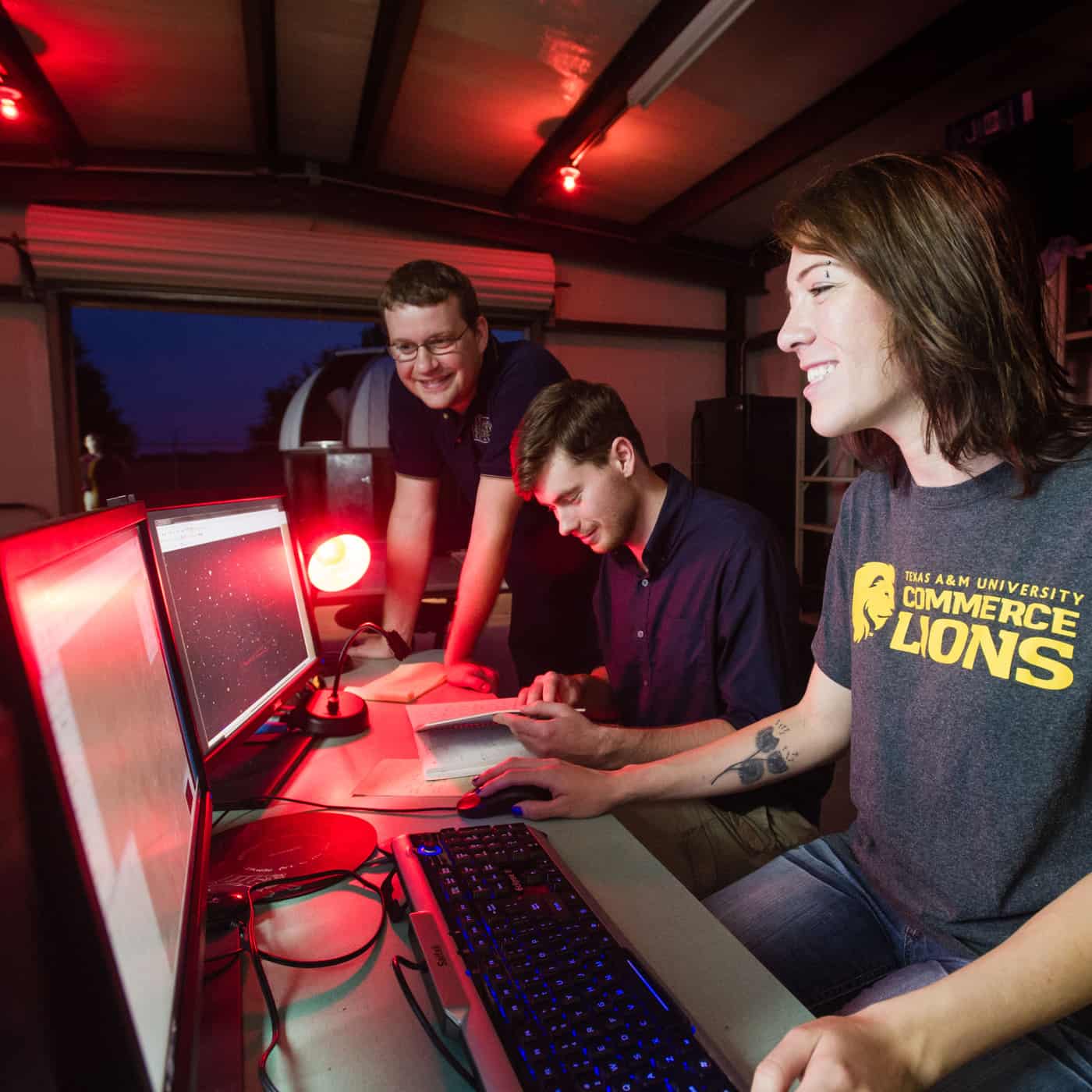
Department of Physics and Astronomy
Unfolding the Universe
Let your intelligence drive your imagination with a solid foundation in the physical sciences and personalized attention from our 11 full-time faculty members.
Physics and astronomy explore the behavior and structure of matter and energy at all levels to help describe our world and universe. Through our program in physics and astronomy, you will be equipped to contemplate the origin and evolution of the universe and help develop new technologies to meet human needs.
The fundamental laws of physics find application in almost every branch of science, engineering and technology. In the coming years, eight out of 10 jobs will require math and computer skills. Your degree in physics will help you thrive in the new economy.
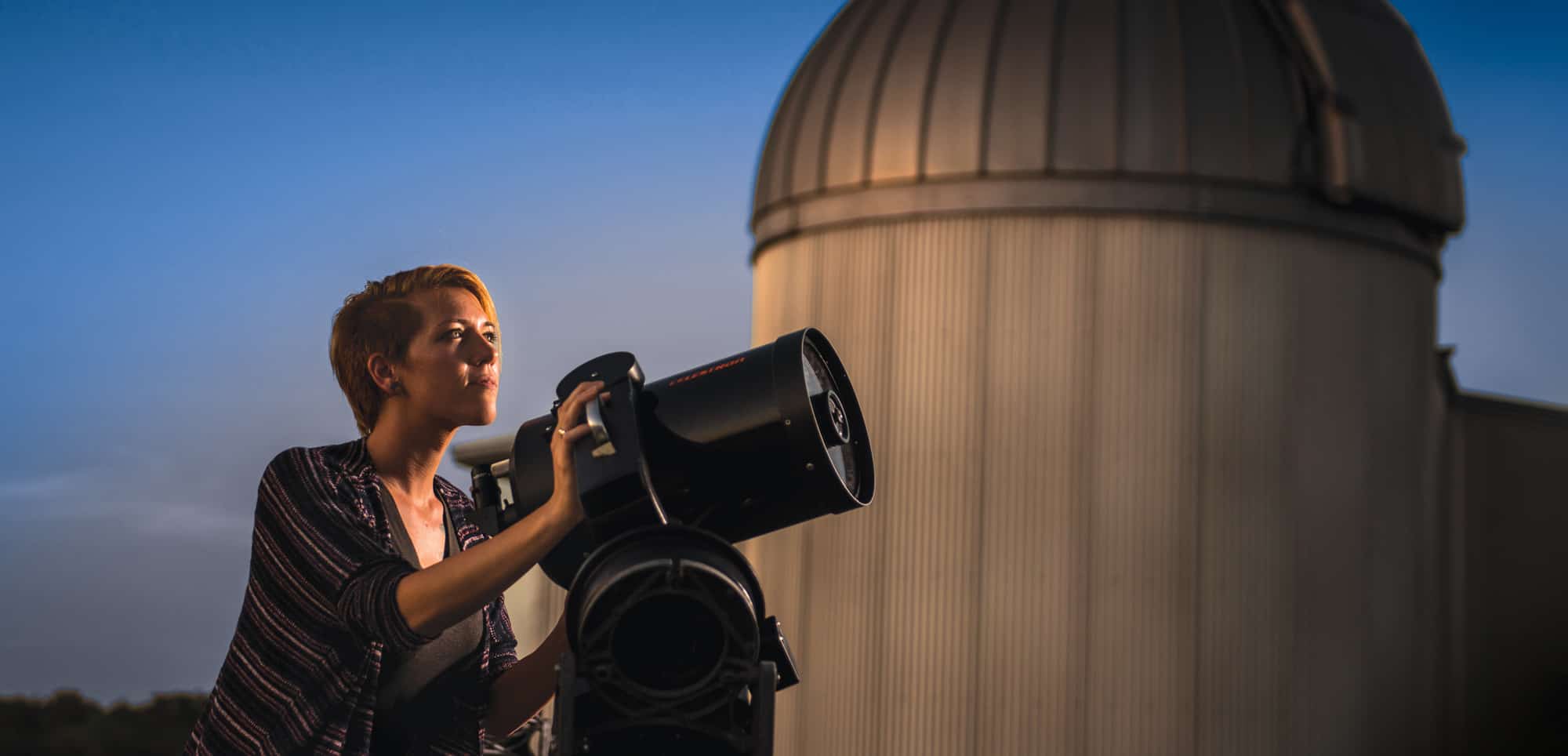
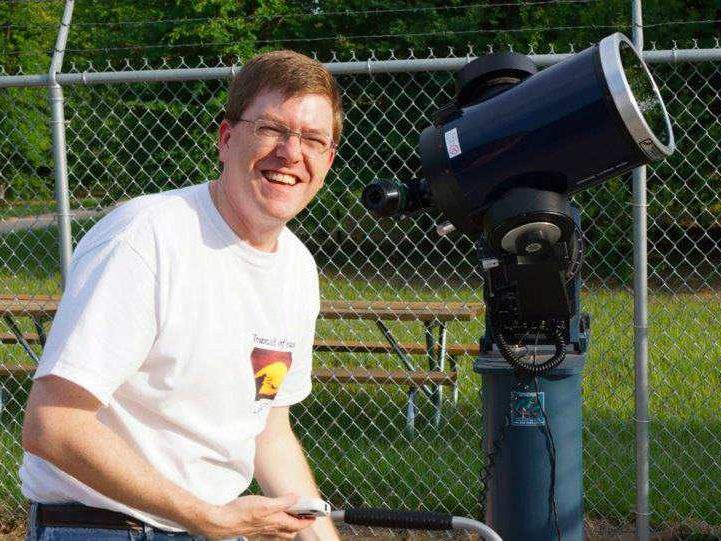
WELCOME FROM THE DEPARTMENT HEAD
Greetings!
I’m Kurtis Williams, and it is my great pleasure to welcome you to the Department of Physics and Astronomy at Texas A&M University-Commerce. We are one of the oldest departments at the university, with a history that stretches back some 80 years, and alumni that have achieved some amazing careers. Currently, we’re an active, growing department with faculty and students conducting research in areas ranging from surface physics and thin-film characterization to stellar and nuclear astronomy and astrophysics. When you find something that interests you, please feel free to contact any of our faculty for more information!

Explore Our Programs
Physics (BA/BS)
Explore the world from the atomic to the universal level with a degree in physics. While here, you’ll investigate the structure of matter and how it functions across space and time. You’ll have the opportunity to study asteroids, white dwarfs and binary stars with our state-of-the-art observatory and research laboratories. Our programs prepare you for graduate work or employment as professional physicists. Utilize your skills in engineering, law and medicine.
Physics (BA/BS) Astrophysics Emphasis
Physics (BA/BS) Biophysics Emphasis
Physics (BA/BS) Entrepreneurship Emphasis
Physics (BA/BS) Teaching Emphasis
There is a growing need for STEM educators. A degree in physics with a teaching emphasis takes your knowledge to the high-school classroom. You’ll take courses in electricity and magnetism, quantum mechanics and modern physics. Our program offers specialized education classes in teaching and learning physics, science and math education theory, and project-based learning in STEM. Once graduated, you’ll be certified to teach physics at the secondary level (grades 7-12).
Physics (MS)
Our program prepares you for industrial employment, college teaching or for further graduate study leading to the Ph.D. degree. We offer a thesis and non-thesis track to suit your academic and professional goals. Choose our teaching emphasis if you want to teach at a community college or dual credit program.
Physics (MS) Teaching Emphasis
The Master of Science in Physics with a Physics Teaching Emphasis caters to middle and high school physics teachers or for people with a Bachelor's in a science who wish to begin teaching at the secondary level.
Our Facilities
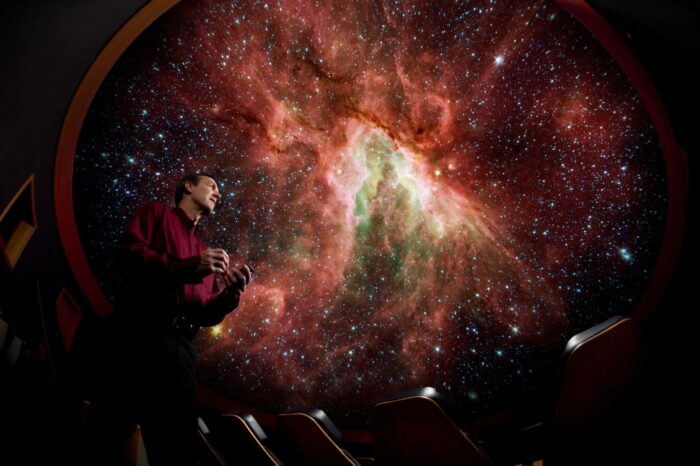
Planetarium
Our planetarium is located on the first floor of the McFarland Science Building and is home to a Digitstar 7 all-digital projection system in a 40 foot dome that provides amazing sights and sounds for audiences of all ages. The Planetarium's 87 reclined seats immerse the viewer in a space environment appearing.
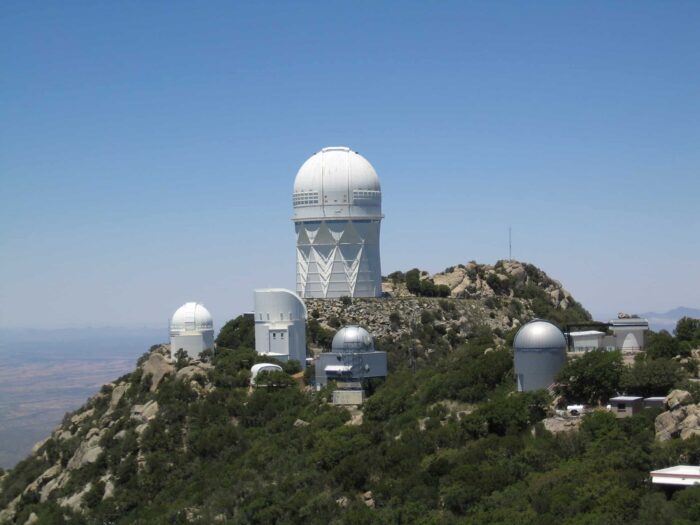
SARA Telescopes
Southeastern Association for Research in Astronomy (SARA) is a telescope consortium that operates two 1-meter-class telescopes at Kitt Peak National Observatory in Arizona and Cerro Tololo International Observatory in Chile, South America. These telescopes are at two premier locations selected for their crystal clear skies and remote mountaintop locations.
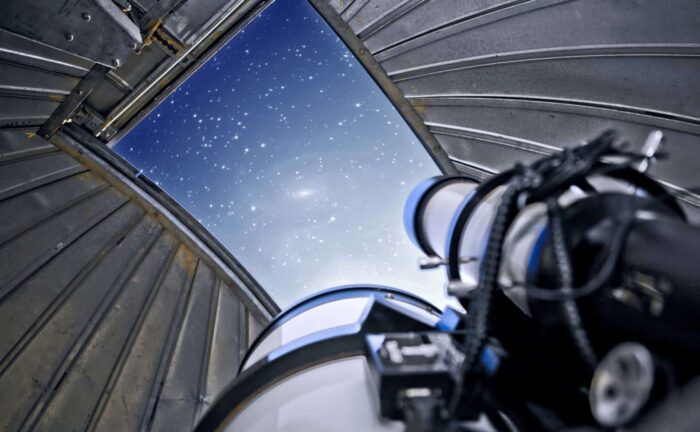
Observatory
Our observatory houses the observing and research-grade telescopes. The latest addition to our collection is a Planewave CDK 700 27-inch telescope, which is housed inside of a clamshell, AstroHaven dome. This telescope is located next to the original dome, which houses a Meade 16-inch LX200 Schmidt-Cassegrain with an attached 5-inch Televue refractor.
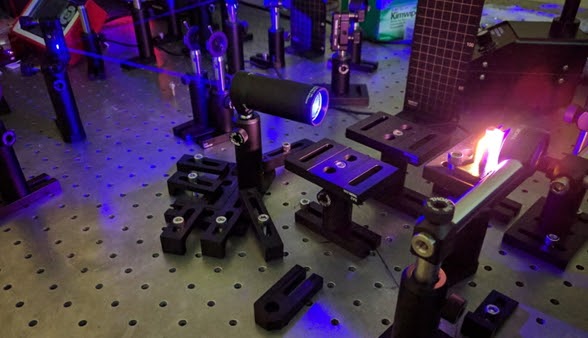
Organic Semiconductor Lab
Organic semiconductors are studied for their potential in next-generation optoelectronic devices. They have many advantages over inorganic materials, such as silicon, which is the most commonly used inorganic semiconductor for electronic devices. Most organic semiconductors are less expensive, flexible and versatile.
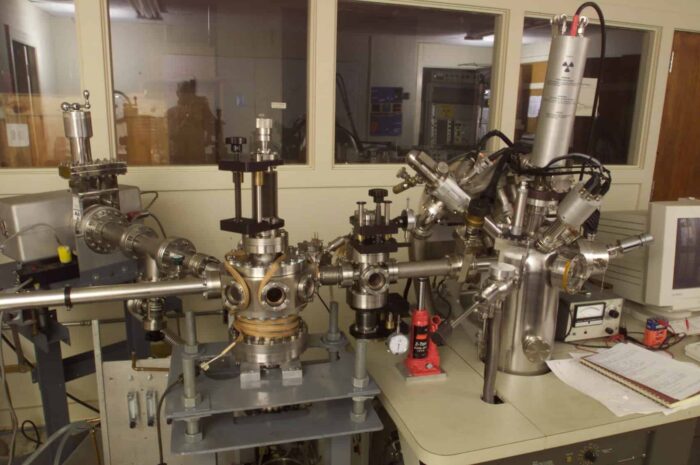
Surface Physics Lab
Surface physics studies the structure and properties of the atoms on the surface of materials. The Surface Physic Laboratory at Texas A&M University-Commerce offers a wide variety of innovative research opportunities including: X-Ray Photoelectron Spectroscopy (XPS), Soft X-Ray and Auger Electron Appearance Potential Spectroscopy (APS).
Community Activities
Physics Day
Explore topics related to physics education and discover innovative ways to teach physics at one of our Physics Day events! Open to the public, Physics Day is hosted during the fall and spring semesters.
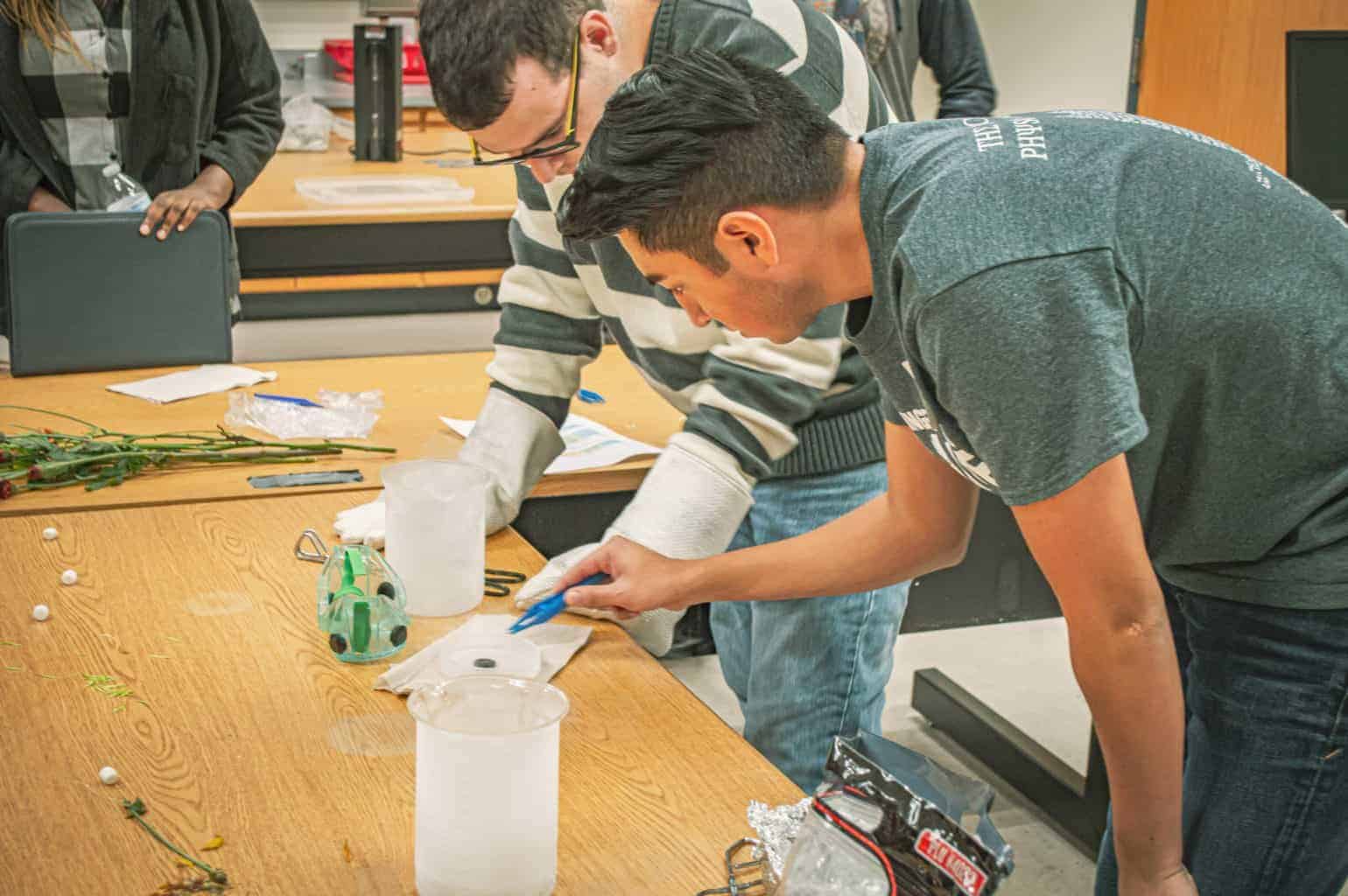
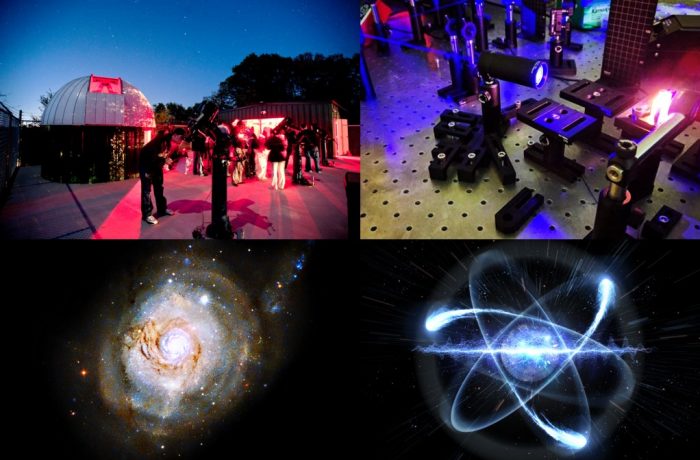
RESEARCH EXPERIENCE FOR UNDERGRADUATES (REU)
SUMMER REU PROGRAM For COMMUNITY COLLEGE STUDENTS
We offer a unique and rewarding research training opportunity each summer, specifically created for community college students interested in physics and astronomy. Six community college students are selected each year to participate in the program. You will enjoy a unique, ten-week research experience working directly with a faculty mentor on a collaborative research project matching your specific interests.
Student Organizations
Society of Physics Students
This organization meets bi-weekly and is open to all students with an interest in physics. We sponsor physics and science-related activities, provide opportunities for members to meet with researchers from other institutions and provide social events for our members.
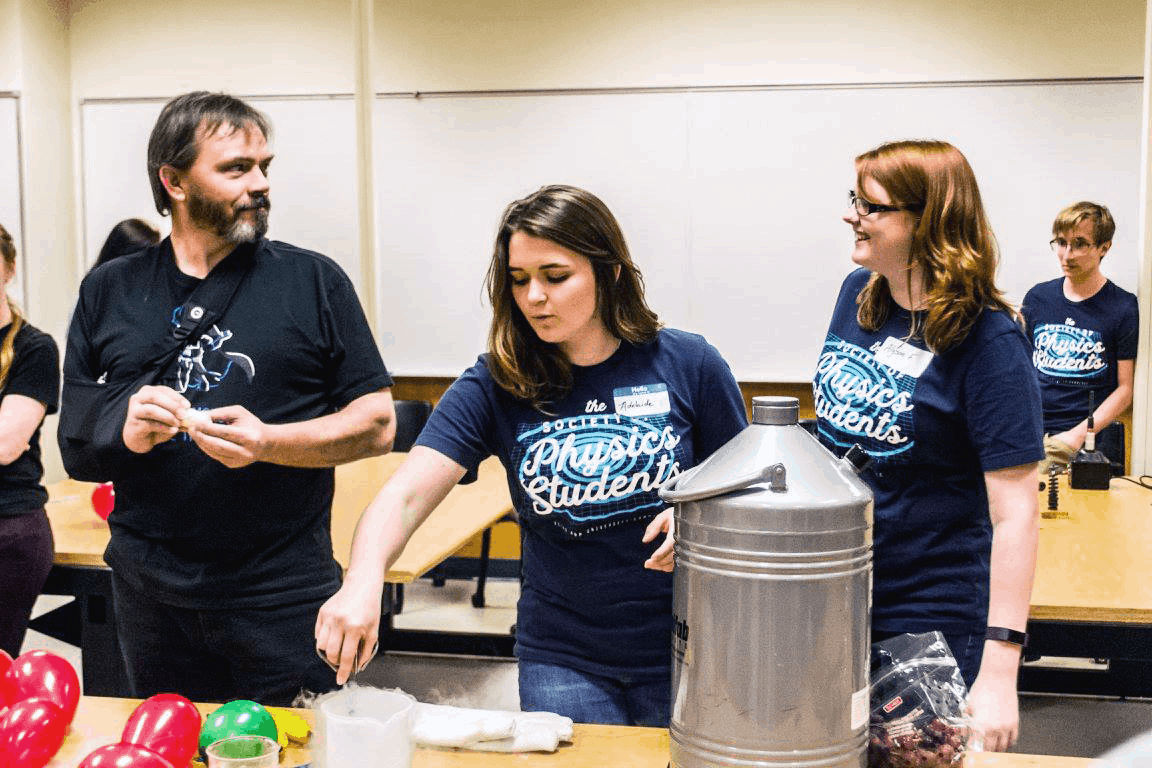
Featured News
SCHOLARSHIPS
As a physics and astronomy student, you have access to a wide range of scholarships specific to your degree.
NSF Scholarship
If you are majoring in Chemistry or Physics at Texas A&M University-Commerce, you may be eligible for receiving up to $7,800/year NSF scholarship based on your financial need, $500/year travel fund to attend scientific meetings and possible additional stipends for doing research with any faculty member in Science, Math and/or Engineering at TAMUC, as well as special training in scientific writing and presentation. These supports may continue up to 3 years.
COLLOQUIUM
Attend one of our departmental colloquium events, where physicists from across the country join us to explore topics such as nuclear physics, satellite navigation and the atomic nuclei. Our invited speakers discuss their current research projects and examine topics in modern physics education. Current students and the public are encouraged to attend to expand your network and knowledge of the universe.
The colloquium is held in McFarland Science Building Room 127. For more information, please contact Dr. Heungman Park.
Upcoming Presentations
We look forward to seeing you at one of our next colloquium events! A list of our colloquium presentations will be featured here when the schedule is confirmed.
Our Research
Our physics and astronomy faculty are excited to develop your knowledge and skills through research. Opportunities are available for both undergraduate and graduate students. We encourage you to discuss any research interests with your professors.
The Behavior of Matter
We apply the modern theory of nuclei, based on quantum mechanics and computational methods, to various scientific questions and practical problems related to the origin of elements, the life and death of stars, and energy and medical applications in our research. Learn More
Physics Education
Physics education research focuses on understanding how to improve the teaching and learning of physics. Research seeks to identify and understand teaching strategies that build physics identity. Methods include analyzing both national survey data and case studies. We study the factors that affect students' career decisions with the goal of increasing the number of physics majors from underrepresented groups, including women, and improving the attitudes of all students regarding physics. You can find more information about our STEM teacher preparation programs here.
Organic Semiconductor Physics
Organic semiconductors are studied for their potential in next-generation optoelectronic devices. While they have many advantages over inorganic materials such as silicon, their material properties are still not well understood compared to inorganic materials. Research focuses on exciton and charge carrier dynamics in organic materials and organic/inorganic hybrid systems. Resolving the interfacial state’s problem and elucidating the characteristics of excitons and charge carriers represent critical steps to achieve efficient organic-based devices. Faculty: Dr. Heungman Park (webpage).
Surface Science
Surface Physics studies the structure and properties of the atoms on the surface of materials. The Surface Physics Laboratory at A&M- Commerce engages in a variety of experimental research including X-Ray Photoelectron Spectroscopy (XPS), Soft X-Ray and Auger Electron Appearance Potential Spectroscopy (APS).
Astronomy and Astrophysics
Research is concerned primarily with observational and theoretical studies of asteroids, white dwarf stars and cataclysmic variable binary systems. Membership in the Southeastern Association for Research in Astronomy (SARA), provides access to three 1-m-class telescopes located at premier astronomical observatories in Arizona, USA, in Chile, South America, and on the island of La Palma in the Canary Islands. We also operate the 0.6-m A&M-Commerce Observatory.
Nuclear Theory and Nuclear Astrophysics
Modeling and calculating observables in direct reactions, heavy-ion central collisions, fusion reactions, formation and decay of compound nuclei, nuclear structure, mean-field theories, radiative capture reactions, transport theories, neutrino scattering, white dwarfs, neutron stars, supernovae and applications of computer science. Research encompasses many branches of nuclear science such as stellar evolution, stockpile stewardship and national security.
Meet our Department
Department of Physics and Astronomy :: Contact
Contact Us
- Department of Physics and Astronomy
- 903.886.5488
- 903.886.5480
- [email protected]
- P.O. Box 3011
- Commerce, TX 75429-3011



 Programs
Programs

